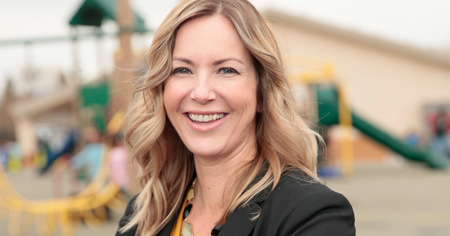From dealing with the pressures of a global pandemic and enduring the stress of racial injustice to coping with the everyday struggles of life, young people in the United States are experiencing an unprecedented amount of personal trauma. Current research from the National Survey of Children's Exposure to Violence states that over 60% of the nation's school-age youth are exposed to some form of trauma during their childhood (2019). Experts from the NA Center for Threat Assessment and Trauma Response expect this percentage to increase over the next year as normal routines and relationships are disrupted and altered further (PFA for Schools, Teachers, and Students, 2020).
As an afterschool professional, you have the important role to help young people thrive during this chaotic time. Being equipped with the right tools to recognize trauma is an important way to mold your program into a space of strength, empathy and resiliency.
REFLECT ON YOUR PRESENCE
The active nature of afterschool programs often creates a degree of "controlled chaos" for group leaders. Moving between activities, managing family requests and dealing with the wide spectrum of social-emotional development among youth can lead to high levels of group leader stress.
While stress is a normal human reaction, regulating the reactions associated with afterschool stress is a key skill that group leaders caring for young people experiencing trauma must develop. The deep nature of trauma affects young people differently and with varying degrees of emotional response. Negative group leader reactions resulting from classroom stress can easily act as a trigger and cause harm.
Reflecting on your personal presence in the program is a fundamental way to redirect trauma-induced stress toward a more positive outlook. Take time before and after program hours to think about the sections of the day that garner the most internal stress for you as a group leader. Maybe it's the transition of your group to the bathroom or setting up activities. Reflect on your interactions, conversations and attitude during this time. Are they positive? Do they build young people up? Or do they extend the effects of trauma?
When you feel the effects of stress approaching, take a second and breathe. Replace negative body language with a smile. Establishing a calm and open presence shows others that you are there for them and willing to listen and grow with them. For youth dealing with trauma, this secure presence provides stability in a time of crisis and reassurance you see their personal needs and are willing to help them through their own personal stress in life.
REFLECT ON YOUR PROGRAM'S CULTURE
A positive program culture is also needed for the success of young people dealing with trauma. New research published by the American Academy of Child Adolescent Psychiatry highlights that youth returning to organized programs after social isolation have an increased chance of displaying social regression and negative behaviors (June 2020). These behaviors are simply external signs of inward trauma caused by peer isolation.
For afterschool programs, the transition back into an organized setting is a perfect opportunity to create a positive program culture that addresses the mental health needs of youth. One easy way to incorporate a trauma-informed program culture is to incorporate meaningful meetings into your program day. Scheduled meetings with discussion topics provide a safe space for youth to share their internal stress and cope with peers. Coupling these meetings with journal time deepens the effectiveness of these meetings and provides another medium to help young people process their feelings in a more intimate and personal manner.
Offering meaningful group activities is yet another effective tool to help foster a trauma-informed program culture. Group directed play is fundamental to help young people build trusting friendships and process stress and anxiety. Look over your lesson plans each week and reflect on what activities can be molded into group-centered play. Incorporating learning choices like group-centered gross motor games, program-wide book clubs, long term STEM projects, and board game areas succeed in helping youth reconnect with peers and form relationships at their own pace. For young people dealing with the effects of quarantine-induced isolation and personal trauma, having the ability to participate in positive peer interactions reintroduces concepts like teamwork, compromising, and other social skills that might have regressed over the past months.
As a program leader, your actions greatly impact the morale of youth. Taking extra time during this traumatic transition to be open, share stress and provide learning opportunities will be the tipping point to help young people thrive.
 Written by Jonathan Williams, Statewide School Age Program Coordinator, Southwestern Child Development Commission. Williams is an NAA Executive member.
Written by Jonathan Williams, Statewide School Age Program Coordinator, Southwestern Child Development Commission. Williams is an NAA Executive member.




